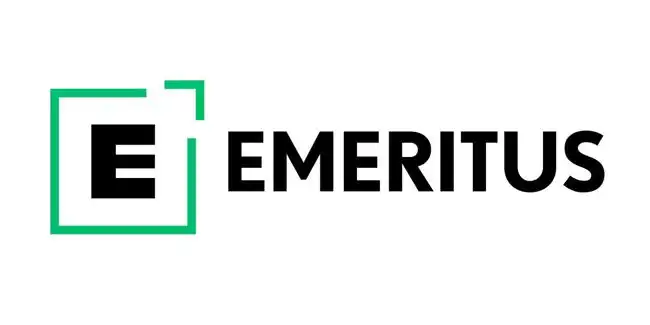Are you looking for a blueprint that helps you build scenario-based lessons into your eLearning scripts?
When used correctly, you can bring your training material to life by using scenarios in your eLearning courses. These interactive learning tools can help transform learners’ behavior and take their comprehension to the next level.
Scenario-based training offers a fresh and exciting way to learn by allowing users to fully immerse themselves in real-life situations. By using relatable scenarios, learners gain knowledge and insights that are relevant and impactful. Plus, adding interactive features means you get to make decisions and experience the consequences – all while gaining valuable experience.
However, building and scripting these scenarios in eLearning courses can be daunting.
If you’re trying to figure out how to implement scenarios into your eLearning design but don’t know where to begin, there are some important steps you can take, like making sure you understand your learning requirements, examining vital situations, and identifying decision points.
In the guide below, I’ll share some steps of successful eLearning script writing and course design for scenario-based training.
Let’s get started…
How to Implement Scenario-Based eLearning
Step 1: Do your research
Not surprisingly, even before actual planning starts you have a number of concepts in your mind. They might include the target audience and their technical means, complexity and length of the course, and interactivity and compatibility with destination user platforms or interfaces.
Long story short, you need to verify that your concepts are not, in fact, misconceptions, and act accordingly.
Consult fellow subject matter experts and selected learners, brainstorm ideas, learn how to bridge planning with delivery results.
After all, your ultimate goal is to provide a lasting impression and encourage knowledge retention – so double-check to be sure.
Step 2: Create clear instructional goals
Now, that your idea seems valid for scripting, move on to step 2 and define the scope of your course. Keep the superfluous at bay – you are in the planning phase, so eliminate distractions and concentrate on the fundamentals. Try to benchmark your script against popular project management and marketing concepts with the traditional challenge, solution and results scheme.
Sounds like a case study where a long project is framed into succinct formulas. That’s the right way of visualizing your future work. Coffee breaks, vacation time, sabbaticals and extracurricular activities don’t matter for now, it’s your hours and results that need sketching out.
You may always keep a generic course script up your sleeve that covers a few tasks or conjectures resolved with specific approaches, and fill it with new content to see if they make a good match.
Step 3: Translate concepts into context and characters
All scenarios are essentially stories that involve their own settings, protagonists, issues, and solutions. Since scenario-based training deals with real situations, try to establish authentic cases that will appeal to your audience. Make sure you base content around specific activities and right and wrong choices, and link these situations with preferable results.
Be creative and try it comic-style, with lively dialogues, speech bubbles, and basic personal traits for your most emblematic characters. Mind mappers and storytelling software will be of great help if you choose to put the pencil and paper aside and make it on-screen from square one.
Step 4: Take a break and put together some sticky notes
Now that you have a few story and character options, it’s time to do some storyboarding. Stick a couple of dozen notes on a physical surface or make a few clicks in your scenario planning software. Does this stuff make a logical sequence? Shuffle, remove, and swap the cards until it does. Okay, does this split into modules with individual objectives? Not yet? Move on to the next step!
Step 5: Divide the script into sections
It’s time to shape up thematic units derived from initial research and the pre-course background of your audience. Each piece should deliver a clear, unified message and address a problem. Your logical fragmentation must be right if you can come up with a one-sentence assessment question and expect a one-sentence answer that captures the core idea. Otherwise, you might be overinflating some of the modules, or juxtaposing two or more complicated topics.
Step 6: Deliver a prototype
Create a quick mockup using a graphic tool like Visio. Try to get some volunteers for your proof of concept, play the characters, record audio narration, produce basic images and effects – give your partial script some flesh. Invite a sample group of learners and hear their feedback, then start yet another iteration to incorporate the changes. That’s when it all just begins… Go break a leg!
In conclusion
All in all, scenario-based e-Learning is a safe and entertaining knowledge-sharing environment that allows for hassle-free practice and learning from one’s mistakes.
Scenario-focused training builds on stories that highlight real-life cases or pertinent examples that help learners emulate the context.
In order to capture the attention of your audience from the very start, it’s key to get a script handy. The backbone of an effective course, the structure should sketch out the pivotal points, interactions and intended emotional response. Make your cases and characters true-to-life and challenges relevant – and start building a rapport with your learners.
If you’re ready to elevate your instructional design career and start creating great eLearning experiences, Emeritus’ Professional Certificate in Instructional Design program has got you covered.
Expand your knowledge in the field with comprehensive training that covers everything from the basics to practical implementation strategies for online learning environments.
Whether you’re just starting out or looking to take your skills to the next level, this course is the perfect fit for you.
Don’t wait any longer to become an expert in instructional design. Enroll now and take the first step toward unlocking your full potential.
You can learn more about the program and request a brochure at this link.
 Emeritus Professional Instructional Design Certificate | Online Certificate Course
Emeritus Professional Instructional Design Certificate | Online Certificate Course
Gain firsthand expertise in instructional design principles and methodologies through this unique Professional Certificate program. Create impactful learning solutions and improve people's ability to learn.



Good advice, thanks! I just see one inconsistency. Looks like there’s a lot of thinking going on in an author’s head before anything emerges on a board or sticky note. Why not start thinking ‘tangibly’ from the very beginning? I’d interchange steps 3 and 2 for that purpose.
Jill, thanks for the input! No, that’s done for a reason. You can’t see the big picture while you are gathering siloed data, so if you verbalize and wipe out seemingly irrelevant thoughts at stage 1 or 2, the odds are you’ll miss out on a big chunk of the plot. So once you’ve decided on the goals, it makes sense to take a break and let the ideas take their course.